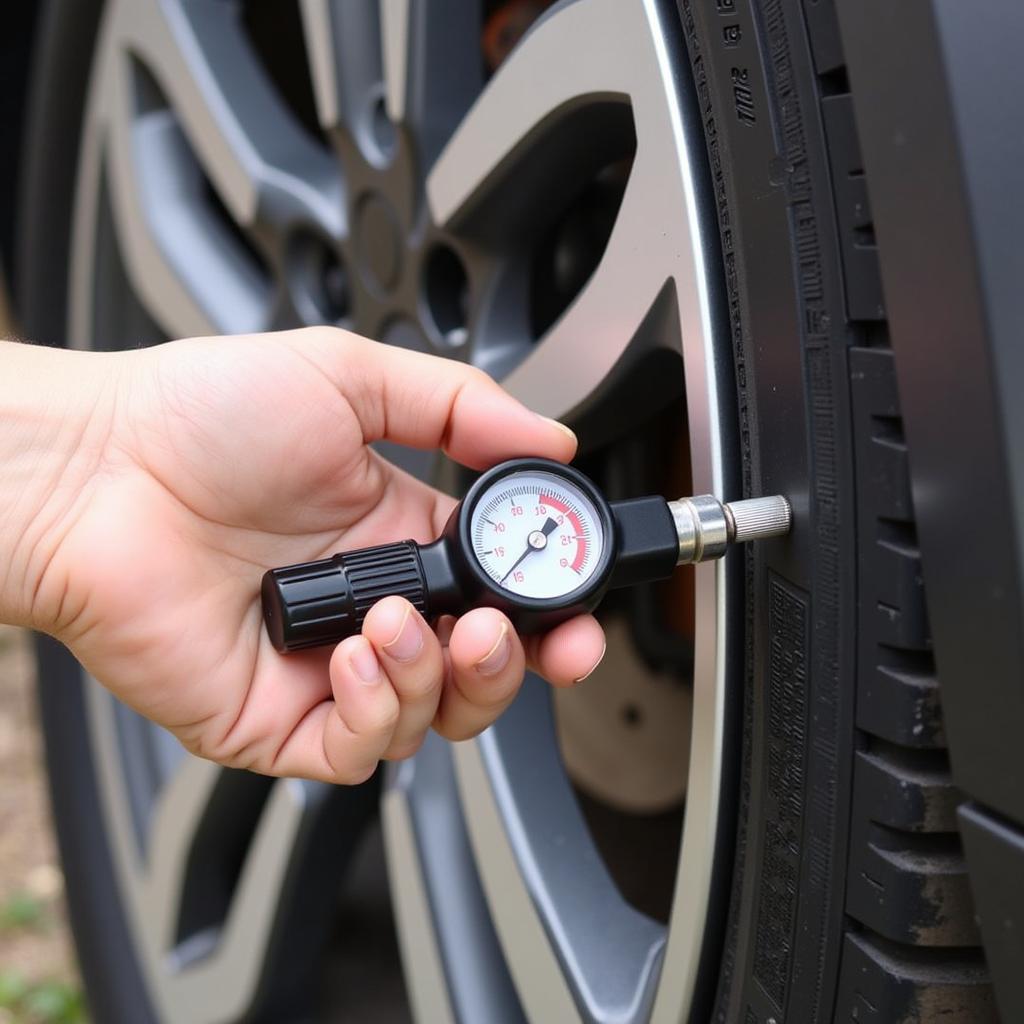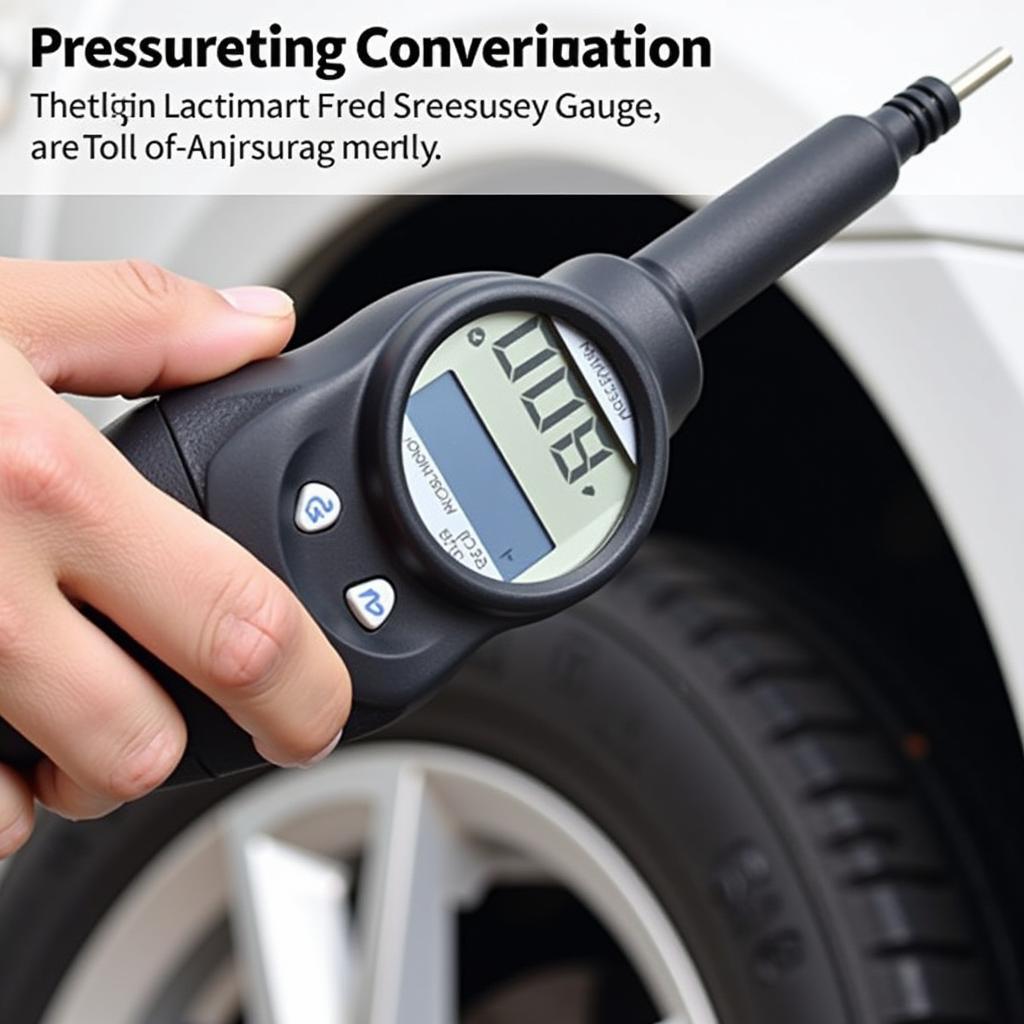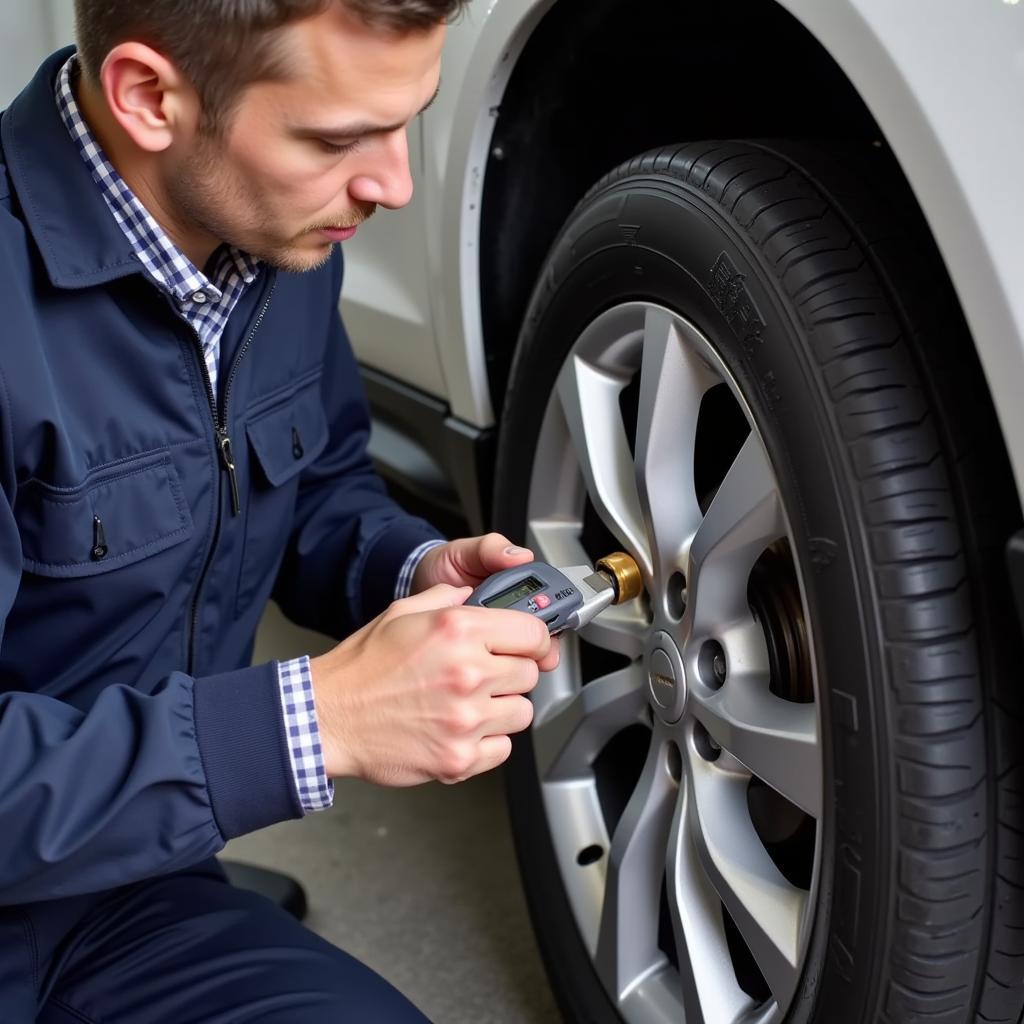Checking tire pressure is crucial for safety and optimal vehicle performance. While VCDS is a powerful diagnostic tool, it doesn’t directly measure tire pressure. This often leads to confusion among car owners and technicians who are accustomed to using VCDS for a wide range of diagnostic tasks. This article clarifies how tire pressure monitoring works, distinguishes between direct and indirect TPMS, and guides you on the proper methods for checking and maintaining correct tire pressure. Understanding these systems will ensure you’re driving safely and efficiently.
Similar to tpms vcds, this often involves a specific procedure. Tire pressure monitoring systems (TPMS) are essential safety features in modern vehicles. These systems alert the driver when tire pressure drops below a safe threshold, preventing accidents caused by underinflation. There are two main types of TPMS: direct and indirect. Direct TPMS uses sensors within each wheel to measure pressure and transmit the data wirelessly to the vehicle’s control unit. Indirect TPMS, on the other hand, relies on the wheel speed sensors used by the anti-lock braking system (ABS). It infers tire pressure by detecting changes in rotational speed caused by variations in tire diameter due to underinflation.
Direct TPMS offers more precise readings and can often identify which tire is underinflated. However, it requires specialized tools for sensor replacement and programming. Indirect TPMS is generally less expensive and simpler, but it can be less accurate and doesn’t pinpoint the affected tire. VCDS, while invaluable for diagnosing and troubleshooting various vehicle systems, does not directly interact with TPMS sensors.
 Checking Tire Pressure with a Gauge
Checking Tire Pressure with a Gauge
Understanding Tire Pressure Monitoring Systems (TPMS)
TPMS is not just a convenience feature; it’s a safety imperative. Underinflated tires can overheat, increasing the risk of blowouts. They also negatively impact fuel economy and tire lifespan. Correct tire pressure ensures optimal contact with the road, improving handling, braking performance, and overall safety.
How Direct TPMS Works
Direct TPMS relies on battery-powered pressure sensors located inside each wheel. These sensors transmit pressure readings wirelessly to the vehicle’s control module. When pressure drops significantly, a warning light illuminates on the dashboard.
How Indirect TPMS Works
Indirect TPMS doesn’t measure tire pressure directly. Instead, it utilizes the ABS wheel speed sensors. Underinflated tires have a smaller diameter than properly inflated ones, and therefore rotate faster. The system detects these changes in rotational speed and triggers a warning light.
Using a Tire Pressure Gauge: The Most Accurate Method
The most reliable way to check tire pressure is with a dedicated tire pressure gauge. These gauges are inexpensive and widely available. You can find them at auto parts stores, gas stations, and even supermarkets.
 Digital Tire Pressure Gauge Display
Digital Tire Pressure Gauge Display
Locating Your Recommended Tire Pressure
Your vehicle’s recommended tire pressure is typically found on a sticker located on the driver’s side doorjamb or in the owner’s manual. This pressure is specifically designed for your vehicle’s make and model to ensure optimal performance and safety.
Like vcds secondary air test, understanding your specific vehicle’s requirements is essential. Ignoring this recommended pressure can lead to uneven tire wear, reduced fuel efficiency, and increased risk of accidents.
Troubleshooting TPMS Issues
If your TPMS warning light is illuminated, it’s crucial to check your tire pressure immediately. If the pressure is low, inflate the tires to the recommended level. If the light remains on after inflating the tires, there might be a fault with the TPMS itself. This could range from a faulty sensor to an issue with the control module.
As with audi a8 vcds lowering, addressing any warning lights promptly is crucial for maintaining your vehicle’s health. While VCDS can help diagnose other vehicle systems, it won’t directly diagnose TPMS problems in most cases. A dedicated TPMS diagnostic tool may be required.
 Mechanic Checking TPMS Sensor
Mechanic Checking TPMS Sensor
Conclusion
While VCDS is a versatile diagnostic tool, it doesn’t directly check tire pressure. Using a tire pressure gauge and adhering to the recommended pressure for your vehicle remains the most accurate and reliable method. Understanding the differences between direct and indirect TPMS is important for maintaining your vehicle’s safety and performance. Regularly checking and maintaining correct tire pressure ensures optimal handling, fuel efficiency, and prevents potential tire-related accidents.
FAQ
-
Can VCDS check tire pressure? No, VCDS does not directly interface with TPMS sensors to read tire pressure.
-
How do I check my tire pressure? Use a tire pressure gauge to check each tire individually.
-
Where can I find my recommended tire pressure? Check the sticker on your driver’s side doorjamb or your owner’s manual.
-
What does the TPMS warning light mean? It indicates that one or more tires are significantly underinflated.
-
What should I do if my TPMS light stays on after inflating my tires? Consult a qualified technician for diagnosis and repair.
-
How often should I check my tire pressure? At least once a month and before any long trips.
-
Can I use VCDS to diagnose TPMS issues? While VCDS might offer some limited insights in certain vehicles, a dedicated TPMS diagnostic tool is often necessary for accurate troubleshooting.
For further assistance, please contact us via Whatsapp: +1 (641) 206-8880, Email: [email protected], or visit us at 276 Reock St, City of Orange, NJ 07050, United States. Our customer support team is available 24/7. You might also want to check out related articles on our website, such as tester vcds and vw tdi with vcds.

